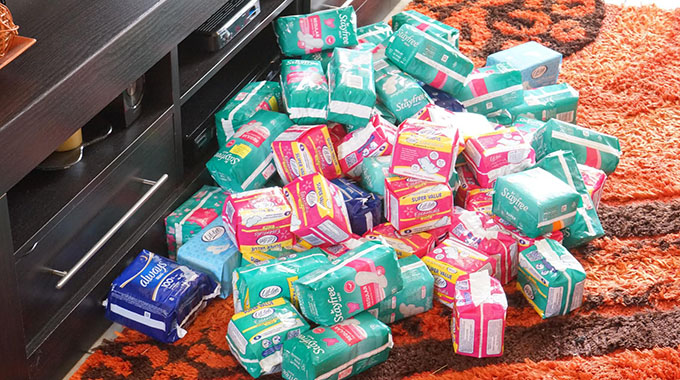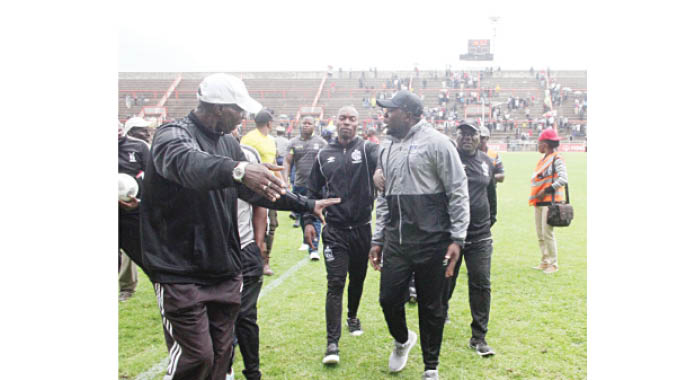The Menstrual Equity Journey: $200 million later

Theresa Farai Nyava
THE move by Government to allocate $200 million for free sanitary wear for rural school girls who menstruate, in the 2020 National Budget, is a big step in the right direction towards ending period poverty in Zimbabwe. While we would have wanted Government to cater for all groups of women and girls who are underprivileged, we are however, encouraged that at least one big group of girls that is in desperate need of menstrual products has been taken care of. This, of course, is in line with the anticipated Education Act which requires that all school girls should be provided with free sanitary wear; and thanks to authorities for being proactive. Those who follow Parliamentary proceedings might recall that the Education Amendment Bill was superseded by the end of the First Session of the Ninth Parliament. A motion was, however, moved in the Lower House last week that the Bill be restored on the order paper at the stage at which it had reached.
In light of the above, the Government’s proactive stance is saluted. Young girls living in rural areas often bear the brunt of period poverty, having to miss school for a number of days when they are menstruating due to lack of sanitary wear. It has been established that 72 percent of school girls in rural areas don’t use commercial sanitary wear, desperately resorting to unhygienic means, with 62 percent of them missing school every month. A girl who is absent from school due to menstruation for four days every month loses at least 40 learning days, the equivalent of six weeks of learning, per year. It’s like not going to school for half of a school term. Equity in education can therefore not be achieved under such a scenario.
So this development, if implemented well, will ensure that girls attend school, concentrate and also participate in sporting activities, improve their mental health and generally be in control of their periods. It will also address issues to do with period shaming, as girls are often laughed at when they spoil their school uniform or the school chair, or when walking awkwardly due to use of improper and inconvenient menstrual absorbents such as rags, cow dung, you name it.
Looking at the ZWL $200 million budget allocated by Treasury, which translates to about US$12.5 million; it is actually one of the biggest budgets for free sanitary wear to schools by any government on the continent, and globally. Kenya allocated a budget of US$5 million, South Africa US$10,6 million, and Scotland $11,7 million. We are also of the view that the $200 million can actually cater for all schools girls who menstruate, including in urban areas, as lesser budgets were used elsewhere to target a bigger population than we have in Zimbabwe. Here in Zimbabwe, female scholars between Grade 4 and Form 6 are about 1.2 million, with those in primary school (Grade 4 to Grade 7) constituting about 60 percent of that figure. However, most girls in primary school do not menstruate, as the average age for menstruation is 13 years. However, some may start their periods from as early as 10 years, although this is not common. From our estimates, we might be actually looking at a number of 550 000 school girls at most, both in urban and rural schools, that need sanitary wear, which translates to a sanitary wear per capita of $363. This means that the allocated money is adequate to cater for all school girls who menstruate, in both urban and rural areas.
Another critical issue is transmission of these resources to ensure that they reach to all intended beneficiaries adequately, transparently and in a cost effective manner. Allocating resources is one thing and managing them is another. This is why it is key to put concrete systems in place to ensure strong monitoring and evaluation mechanisms to measure the implementation of this important programme. Various stakeholders in menstrual health management as well as other sectors can be brought together under a taskforce that ensures the efficacy of the programme. Countries such as the United Kingdom have created a Period Poverty Taskforce to address the issue of period poverty and stigma. Zimbabwe can also take a leaf and have an almost similar setup, perhaps called the Menstrual Equity Taskforce.
Education and awareness programmes are another important issue before rolling out such a countrywide programme. A study by SNV Zimbabwe a few years back established that 70 percent of girls do not even know any sanitary pad brand, which is likely that many may not even know about how to use commercial sanitary wear correctly. Girls therefore need to be taught how to use the sanitary wear, when to change, how to dispose correctly as well as other important menstrual health management information. Again, stakeholders working in menstrual hygiene and health management should therefore be roped in to be part of the implementation in this regard.
Further, it will be important for authorities to consider sustainable menstrual solutions such as reusable pads, menstrual cups as well as period underwear. This will prevent the hassle of having to regularly allocate money into the programme, to allow for other groups of underprivileged girls and women to be reached. Menstrual cups, for instance, can be used for up to 10 years, which means if a Form 1 girl starts using a cup today, she can go through high school, until she finishes university, with that single cup. Some washable reusable cloth pads can also last up to five years, thereby bringing relief to girls over a long term period.
Some critics want to dismiss the reusable pad saying there is no water in the rural areas to wash the reusable pad, yet rural households use water every day to cook, bath, wash their laundry, drink and for their livestock. Why is the water card only played when it comes to washing the reusable pad, which only needs about 5 litres of water to be washed clean? We should therefore remove that wrong perception around washable cloth pads, as it is actually some kind of stigma.
In this menstruation momentum, where the talk of plastic free periods is making more sense, the sustainable menstrual solutions mentioned above are also ideal as they significantly ensure that less plastic is used during periods. Reusable menstrual options that are ecofriendly should win the day, as opposed to disposable options. You see, more than 70% of a single disposable pad is plastic, which is worth about 4 plastics bags. A girl would need about 20 pads per month, which translates to about 80 plastic bags every month. If it’s a family with three females who menstruate, we are talking about 240 plastic bags every month. Even a family that shops every day can never use that amount of plastic as shopping bags.
Further, due to poor sanitary disposal facilities, used disposable pads may end up being wrongly disposed in Blair toilets or in the bush or landfills, where they will also create an environmental menace for centuries to come. A used sanitary pad that is deposited to the environment can take more than 500 years to decompose.
The plastic might also be consumed by birds and animals and kill them. This is why it is really important that this sanitary wear programme for schools consider reusable options. It will be also a way of empowering small local firms that make reusable pads, and are often led by young women.
The 2020 national budget has also proposed to extend the exemption of imported sanitary wear, without pronouncing measures to support the local sanitary wear industry, a move that is of particular concern to us. In our view, this defeats the theme of the budget, “Gearing for Higher Productivity, Growth and Job Creation.” The continued importation of imported sanitary wear destroys local jobs and works against the growth of the local sanitary wear industry, which actually has the capacity to supply all the sanitary wear requirements for women and girls in the country. Imports should only be allowed for sustainable menstrual products that cannot be produced locally. Government cannot expect the local sanitary wear industry to recuperate without supporting it to address its production constraints. Local sanitary wear producers are still offering the lowest prices on the market, compared to imported ones, despite the production constraints and the diseconomies of scale they are currently incurring. This therefore means that, if adequately supported, they can actually do better.
In conclusion, the fight to end period poverty is still far from over. While we celebrate all the victories that have been won so far, we continue to call on authorities to have a budget for every underprivileged girl and woman who menstruate – that homeless girl lying at a street corner, female prisoners, girls in disaster relief camps, female refugees, and many more. We therefore call on legislators to also raise these issues as they will be debating the budget. One of the fundamental roles of Parliament is to protect the constitution. But that cannot be achieved if rights conferred in the very constitution, such as the rights to gender equality, health, education, dignity, among others, are not being realised by the generality of the female populace due to period poverty. This is why we are calling on legislators to mainstream menstruation and ensure menstrual equity is achieved as they debate the 2020 national budget.
Legislators represent the millions of women and girls whose lifestyles are affected every month due to lack of sanitary wear and the legislators are also the ones who approve the budget in line with Section 305 of the constitution.
Further, Section 298(1b)iii of the constitution is quite clear that in allocating for budget expenditure, special provision must be made for marginalised groups and areas. So we want all marginalised and underprivileged groups of women and girls to be allocated free menstrual products so that they can fully enjoy their rights enshrined in our people-driven constitution. We cannot achieve a number of Sustainable Development Goals, whose targeted period is close if we do not recognise how indispensable proper menstrual care is to humanity at large. Already, Zimbabwe is ranked at Number 121 out of 195 countries in terms of progress towards implementation of SDGs, with a score of 59.7%, according to the global SDGs index and Dashboards Report 2019.
It is therefore unequivocal that we cannot achieve SDGs without mainstreaming menstruation and fostering menstrual equity.
Theresa Nyava is the founder and executive director of Sanitary Aid Zimbabwe Trust









Comments